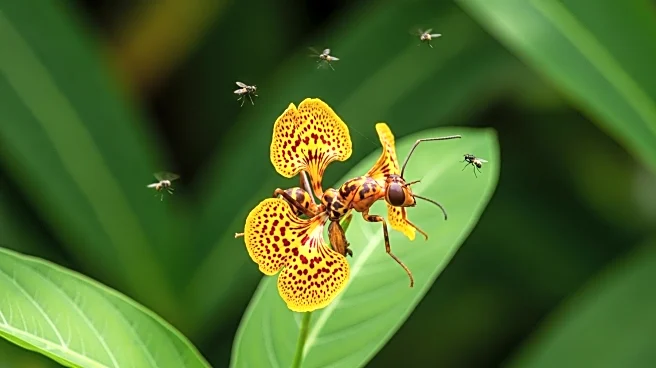What's Happening?
In the Lehigh Valley, northern walkingsticks have been observed mating as the autumn season begins. These insects, which resemble 3- to 4-inch-long brown twigs, use their camouflage to avoid predators. They are typically found in deciduous woods, and when the female is ready to lay eggs, she deposits them singly on the ground. The sound of multiple females dropping eggs can resemble rain hitting the ground. Additionally, the article discusses the behavior of ground bees, which relocate their nests each year as queen bees move to new locations. The piece also touches on the challenges of identifying moth species, given the vast number of species in North America, and highlights the use of technology, such as the Merlin app, for bird identification.
Why It's Important?
The observation of northern walkingsticks mating provides insight into the natural behaviors and life cycles of local insect species, contributing to ecological knowledge and biodiversity awareness. Understanding these patterns is crucial for conservation efforts and maintaining ecological balance. The discussion on ground bees and moth identification underscores the importance of recognizing and preserving diverse insect populations, which play vital roles in pollination and the food chain. The use of technology for species identification reflects a growing trend in citizen science, where individuals can contribute to scientific knowledge through accessible tools, fostering a greater connection with nature.










